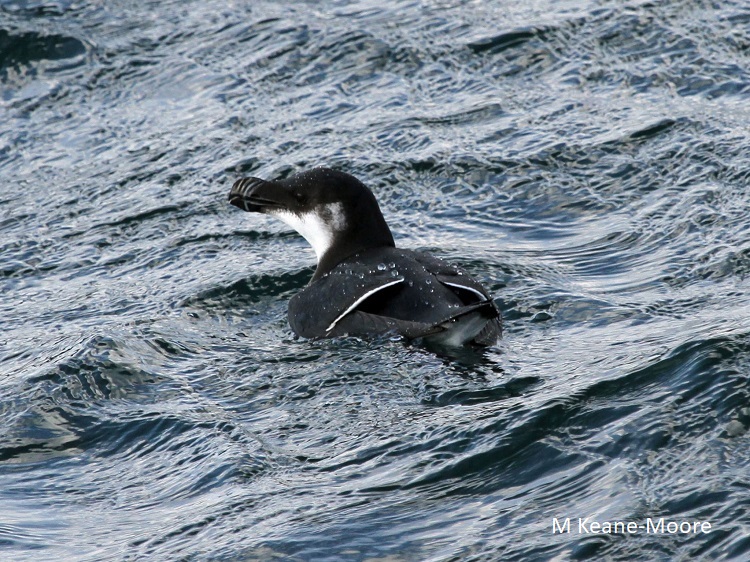


First Printed:
February 28, 1999
Everyone knows and loves the penguin, a denizen of southern seas. Most of the 16 species of penguins nest on or close to Antarctica, but all spend almost all their time at sea, where they are so invisible that we know very little about their life there.
Only those who are addicted to looking for and at birds know that there is another group of seabirds that fill the same ecological niche in the northern hemisphere. They are called auks or alcids. The most famous auk is the one that was most like the penguin and is now gone, the great auk. That this flightless bird is extinct due to human depredations is an important lesson. We profess to admire penguins so much, but these highly specialized birds are all declining and some are threatened, strictly because of human activities.
There are 22 species of alcids left, however, and they are as fascinating and mysterious as the penguin. They also spend most of their time well out to sea, coming to land only to breed, usually in dense colonies on rocky islands. You can make a trip north in late spring or summer to observe them, but in Massachusetts we can only find them in the winter off our shore.
Off shore means many miles for most of these birds, but some alcids do come in close to the coast occasionally or even regularly. The winter of 1999 has been a good year to find alcids close to shore. Thus it was no surprise to find twenty eager people carpooling for an Allen Bird Club trip to Cape Ann. The rocky coastline of Gloucester and Rockport is the Mecca for a yearly pilgrimage by those who want to view the seabirds that spend the winter there.
Our first location was Atlantic Avenue. There among the usual loons, grebes, scoters, goldeneyes, and buffleheads was our first alcid. This was the black guillemot, which does not wander as much as its other cousins, staying close to its breeding sites. However, a few venture south to our coastline and are the one alcid found regularly within sight of land.
On over sixty trips to Cape Ann in 30 years I have never seen so many black guillemots, perhaps a dozen in this one area, some sporting the very white plumage of winter, and others the deep black breeding color with the large white wing patch. Like all alcids, they sit low in the water, diving often for deep swimming fish. They are only a foot long and hard to see, but we are up to the challenge, lined up along the edge of the boulders and ledges where surf crashes, peering through our optics.
Some of us spot a murre, but it quickly dives and disappears. The murres are half again larger than the black guillemots, but dive more and for longer periods. Finally we arrive at Andrews Point, the prime location for alcids, where we scan the waters eagerly. Here we get longer, closer, looks at several thick-billed murres, resplendent in their contrasting costume of jet black above and stark white below.
We find packs of the little harlequin duck, which stay close to the rocky shore and even climb on a rock that the waves wash over. They are also more common here than ever before.
Someone cries that she sees a razorbill, so we all focus on the spot and soon three of these alcids are found together, diving and floating in front of our dazzled eyes. They are similar to murres, but have not just thick, but almost massive bills. Usually there are only observed in flight, lines of birds arrowing low and fast over the water, short wings beating swiftly to bear chunky bodies from one secret sea to another. Here they were before us bringing that secret to light.

Now only one more alcid that we might hope to find. This one so small that at first when it was spied you had to wait for movement to be sure it was not a soda can. At eight inches long with no neck and a tiny beak, the dovekie, or little auk, is a virtual butter ball of the sea. Here it was bobbing in the shallow troughs, rising up on its rump to flutter its wings so fast it appeared to be a hovering hummingbird. How could a mite such as this survive in the vastness of the ocean?